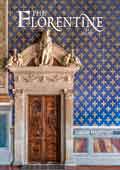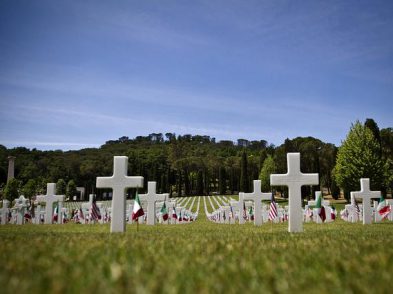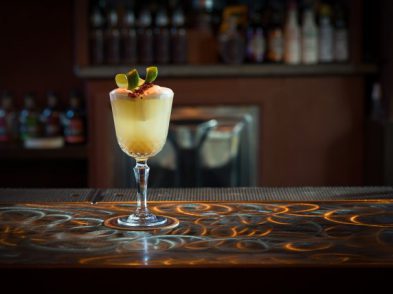There’s a story behind that title, but I’ll postpone its telling, for now. All I will say is that when I arrived in Florence last April, my own fragmented heart could be heard rattling with every step. I first visited the city as my 21st birthday present from my dad—and I loved Florence immediately, firmly believing I’d live here one day. Fifteen years of real life later, I arrived at my rented Oltrarno apartment, enrolled in 12 weeks of Italian lessons and art history studies at the British Institute of Florence.
It’s a great feeling to unearth a dream of your younger self and make it real. It’s an even greater feeling to do it not just in spite of but because of significant and unforeseen upheaval in your life. While I reaped the benefits of the change of scenery, the challenge of my studies and the company of new friends, the city itself set to work on me. Slowly but steadily, the messages of Florence sank in and, as I reflected, I pinpointed six sights and their truths that truly helped to mend my broken heart.
1. Brunelleschi cloister, Santa Croce basilica

Amid the noise of the bustling piazza and the volume of church visitors, I often sat in this beautiful cloister and was never once disturbed by a tour group (a miracle in itself in Florence). It reminded me that in times and places of chaos, it’s important to sit, be still and be quiet—to listen to what the heart needs. The cloister’s peaceful message is as relevant now as it was when it was designed over 500 years ago.
2. Piazza del Limbo

I deliberately passed through this little sunken square many times. While I appreciated it for its name (with which I could deeply identify!), it was the small flood marker high on the wall that made an impression. Denoting the height of the 1966 flood waters, it subtly commemorates that devastation, while surrounded by the city’s obvious survival and recovery. Heartbreak can feel like drowning, but I took this once submerged piazza’s advice: Remember, but rebuild and move on.
3. Santo Spirito church

Behind the stark simplicity of the façade of Santo Spirito is a chapel dedicated to St. Rita of Cascia, the patron saint of impossible things. What better ally for a broken heart! I stumbled across her feast day on May 22, where local ladies sold blessed roses in the beautiful (and usually closed off) cloister. Knowing better than to ignore what the city brought my way, I lit my candles and bought my roses, and took what was on offer here from St. Rita and Florence —hope.
4. Madonna del Cardellino (Raphael), Room 66, Galleria degli Uffizi

Raphael’s stunning ‘Madonna of the Goldfinch’ was painted in 1506 and given as a wedding gift to Lorenzo Nasi. In 1548, an earthquake and consequent landslide on Monte San Giorgio destroyed Nasi’s house and broke the painting into 17 pieces. It was salvaged immediately, but was only finally restored to its current glory in 2008. Gaze on it and learn—it’s never too late to put the pieces back together. A survival story only adds to true beauty and our appreciation of it.
5. Vasari Corridor

Once you’ve looked down on Florence from the Vasari Corridor, there’s no going back. Your perspective on the city has changed—just as heartbreak changes your perspective on life. There is a lesson in the innovation and grandioseness of Duke Cosimo I’s solution to his troublesome outdoor journey from Palazzo Pitti to the Uffizi and the Palazzo Vecchio beyond. Be bold, for there is always a way to solve a problem. Like the Corridoio, go over it (the Arno), around it (Torre dei Mannelli) or through it (Chiesa di Santa Felicita) if necessary, but build your bridge (or corridor), and get over it.
6. The Duomo

The beautiful, soaring cupola of Santa Maria del Fiore dominates the Florentine cityscape. Its very existence offers lessons of its own, lessons in overcoming challenges, finding solutions, and gaining new perspectives. Face the queue, climb the steps and look at Florence. Film director Franco Zeffirelli commented about Brunelleschi’s Dome: ‘if the genius of man is capable of so much, then even I can and must try to create, to act, to live.’ On the way out of heartbreak, it’s vital to keep the head up and the heart strong. Glancing upwards to the Duomo’s golden sphere achieves both.
Ultimately, heartbreak is all about loss, in any and all of its forms, and there’s no single cure for that. But Florence, the cradle of the Renaissance, deals in rebirth—in merging the old and new, the damaged and restored, the past, the present and the future. My no-longer broken heart and I found in Florence a Renaissance all of our own.




